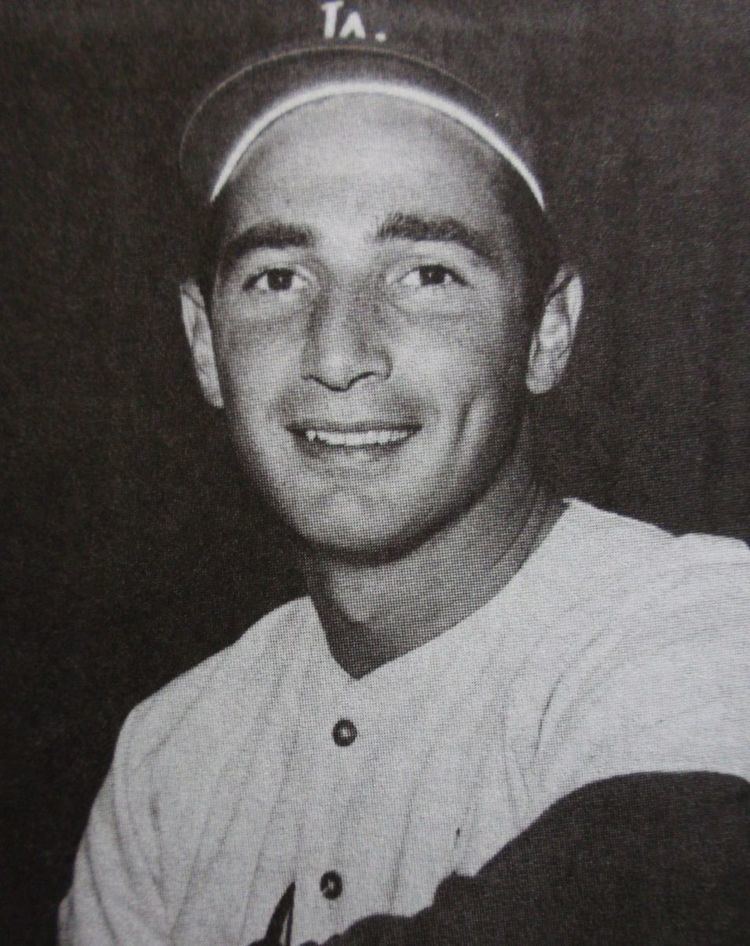 | ||
Local radio KFIVin Scully, Jerry DoggettKWKWJosé García, Jaime Jarrín | ||
The 1965 Los Angeles Dodgers finished the regular-season with a 97–65 record, which earned them the NL pennant by two games over their arch-rivals, the San Francisco Giants. The Dodgers went on to win the World Series in seven games over the Minnesota Twins.
Contents
Offseason
Season Recap
The Dodgers won the World Series in 1963, but injuries and poor play saw them fall to 6th place in 1964. Despite their weak offense and the trade of power hitting Frank Howard for Claude Osteen during the off season, they were expected to contend in 1965 with their strong pitching. However, one month into the season, they lost their best hitter Tommy Davis when he fractured his ankle sliding into second base. Most experts thought this ended any hope the Dodgers had of winning the pennant. To replace Davis, the club called up journeyman Lou Johnson; his infectious cheerful attitude and knack for timely hitting helped keep the club in contention.
The National League pennant race was a thriller, with 6 teams (the Dodgers, Giants, Pirates, Reds, Braves, and Phillies) in contention throughout a summer that saw the Dodgers, Giants, Braves, and Reds all take their turns in first place. With these 6 teams tightly bunched heading into September, the Giants went on a 14-game winning streak to take a 4 1/2 game lead with two weeks to play. Then the Dodgers went on a 13-game winning streak, and won 14 of their last 15 games to win the pennant by 2 games over the Giants.
The Dodgers were led by shortstop Maury Wills with 94 stolen bases, Sandy Koufax (26–8, 2.04 E.R.A. and a then record 382 strikeouts), and Don Drysdale (23–12, 2.77 E.R.A.) Drysdale also chipped in with 7 home runs and was the club's only .300 hitter.
Notable transactions
Starters by position
Note: Pos = Position; G = Games played; AB = At bats; H = Hits; Avg. = Batting average; HR = Home runs; RBI = Runs batted in
Other batters
Note: G = Games played; AB = At bats; H = Hits; Avg. = Batting average; HR = Home runs; RBI = Runs batted in
Starting pitchers
Note: G = Games pitched; IP = Innings pitched; W = Wins; L = Losses; ERA = Earned run average; SO = Strikeouts
Other pitchers
Note: G = Games pitched; IP = Innings pitched; W = Wins; L = Losses; ERA = Earned run average; SO = Strikeouts
Relief pitchers
Note: G = Games pitched; W = Wins; L = Losses; SV = Saves; ERA = Earned run average; SO = Strikeouts
Game 1
October 6, 1965, at Metropolitan Stadium in Bloomington, Minnesota
Game 2
October 7, 1965, at Metropolitan Stadium in Bloomington, Minnesota
Game 3
October 9, 1965, at Dodger Stadium in Los Angeles
Game 4
October 10, 1965, at Dodger Stadium in Los Angeles
Game 5
October 11, 1965, at Dodger Stadium in Los Angeles
Game 6
October 13, 1965, at Metropolitan Stadium in Bloomington, Minnesota
Game 7
October 14, 1965, at Metropolitan Stadium in Bloomington, Minnesota
Awards and honors
All-Stars
Farm system
LEAGUE CHAMPIONS: Albuquerque
1965 Major League Baseball draft
This was the first Major League Baseball draft. The Dodgers drafted 30 players this year in the June draft and an additional 2 in the August Legion draft. The first player the Dodgers ever drafted was a shortstop from Bakersfield High School named John Wyatt. He played in the teams farm system through 1970 but never advanced past Class-A.
The most notable player drafted this year was Tom Seaver, who was picked in the 10th round from the University of Southern California, but he did not sign with the team and re-entered the draft the following year, where he was selected by the New York Mets.
